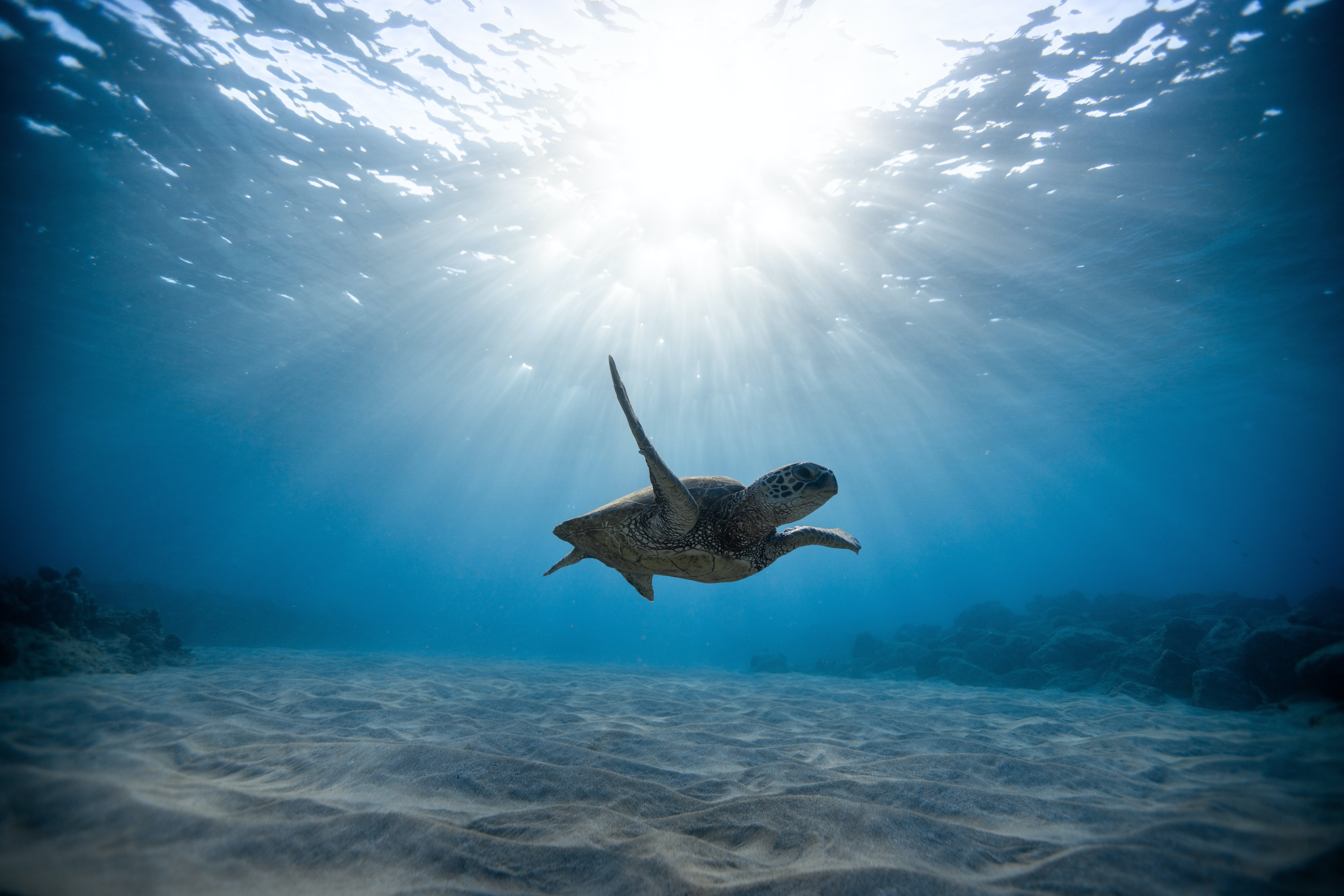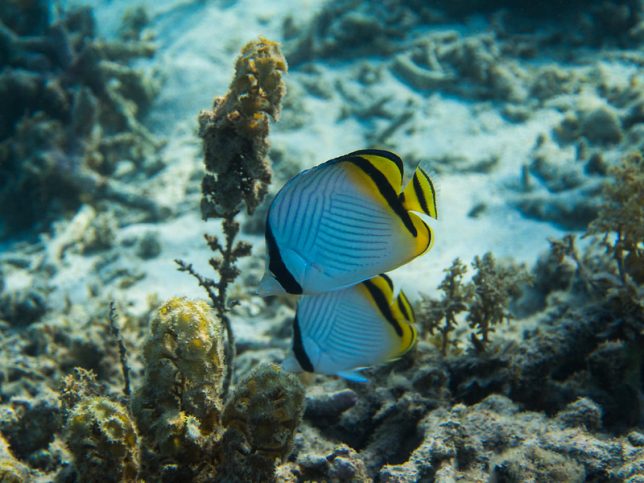
“As the world looks to the ongoing U.N. Biodiversity Conference to set the course for nature recovery, we simply cannot afford to fail,” said the head of the International Union for Conservation of Nature.
By Jessica Corbett, Common Dreams
During the United Nations biodiversity summit in Montreal, an international conversation group on Friday highlighted how humanity is dangerously failing marine life with illegal and unsustainable fishing, pollution from agricultural and industrial runoff, and activities that drive up global temperatures.
The International Union for Conservation of Nature (IUCN) Red List of Threatened Species now features 150,388 species, 42,108 of which face possible extinction. Of the 17,903 marine animals and plants on the list, more than 1,550 are at risk.
“Today’s IUCN Red List update reveals a perfect storm of unsustainable human activity decimating marine life around the globe. As the world looks to the ongoing U.N. Biodiversity Conference to set the course for nature recovery, we simply cannot afford to fail,” Bruno Oberle, the group’s director general, warned Friday. “We urgently need to address the linked climate and biodiversity crises, with profound changes to our economic systems, or we risk losing the crucial benefits the oceans provide us with.”
The primary aim of the 15th Conference of the Parties (COP15) of the Convention on Biological Diversity (CBD)—which is hosted by China but kicked off earlier in Canada this week due to Covid-19 restrictions—is the development of post-2020 global biodiversity framework (GBF).
“We urgently need to address the linked climate and biodiversity crises, with profound changes to our economic systems, or we risk losing the crucial benefits the oceans provide us with.”https://t.co/s3VhyqCbWJ
— Food & Water Watch (@foodandwater) December 10, 2022
A top priority for many parties to the treaty—along with the United States, which has failed to ratify the CBD over the past three decades but is still participating in the summit—is to protect 30% of lands and waters by 2030. However, as activists and Indigenous leaders from around the world have noted, there are serious human rights concerns regarding implementation of the 30×30 goal.
COP15 comes after the fifth round of discussions about establishing a U.N. treaty for the high seas, or the two-thirds of oceans outside territorial waters. Those August talks failed to produce an agreement—which, as Laura Meller of Greenpeace’s Protect the Oceans campaign warned at the time, “jeopardizes the livelihoods and food security of billions of people around the world.”
“While progress has been made, particularly on ocean sanctuaries, members of the High Ambition Coalition and countries like the USA have moved too slowly to find compromises, despite their commitments,” Meller continued. “Time has run out. Further delay means ocean destruction. We are sad and disappointed. While countries continue to talk, the oceans and all those who rely on them will suffer.”
Similarly, urgent warnings came with the update Friday. Ashleigh McGovern, vice president of the Center for Oceans at Conservation International, said that “with this devastating IUCN Red List update on the status of marine species, it is clear that business as usual is no longer an option.”
“Human activity has had devastating effects on marine ecosystems and biodiversity, but it can also be harnessed to drive action as a matter of survival, equity, and climate justice,” she added. “If we are to secure a new future for the world’s oceans and the essential biodiversity they harbor, we must act now.”
“We urgently need to address the linked climate and biodiversity crises, with profound changes to our economic systems, or we risk losing the crucial benefits the oceans provide us with.”https://t.co/s3VhyqCbWJ
— Food & Water Watch (@foodandwater) December 10, 2022
Jon Paul Rodríguez, chair of the IUCN Species Survival Commission (SSC), pointed out that “most of the Earth’s biosphere, 99% of all livable space on our planet, is underwater.”
“Humanity acts as if oceans were inexhaustible, capable of sustaining infinite harvest of algae, animals, and plants for food and other products, able to transform vast quantities of sewage and other pollutants that we pour in coastal areas, and absorb the CO2 generated by land-use change and burning fossil fuel,” he said. “This Red List update brings to light new evidence of the multiple interacting threats to declining life in the sea.”
According to the IUCN Red List, 20 of the 54 abalone species—some of the world’s most expensive seafood—are threatened with extinction.
“Abalones reflect humanity’s disastrous guardianship of our oceans in microcosm: overfishing, pollution, disease, habitat loss, algal blooms, warming, and acidification, to name but a few threats. They really are the canary in the coal mine,” said Howard Peters, a member of the IUCN SSC Mollusc Specialist Group and research associate at the U.K.’s University of York who led the abalone assessment.
“The most immediate action people can take is to eat only farmed or sustainably sourced abalones. Enforcing fishery quotas and anti-poaching measures is also critical,” Peters noted. “However, we need to halt the changes to ocean chemistry and temperature to preserve marine life including abalone species over the long term.”
Twenty of the world’s 54 abalone species, sold as some of the world’s most expensive seafood, are now threatened with extinction.
— IUCN (@IUCN) December 10, 2022
Learn about their threats in the latest @IUCNRedList update.https://t.co/MOLGFhhjFF #COP15 pic.twitter.com/qM40NkQQRU
The update also raised the alarm about dugongs, particularly in East Africa and New Caledonia. Populations of the large herbivorous marine mammals are threatened by fishing gear, oil and gas exploration and production, chemical pollution, and the destruction of seagrasses they rely on for food.
“Strengthening community-led fisheries governance and expanding work opportunities beyond fishing are key in East Africa, where marine ecosystems are fundamental to people’s food security and livelihoods,” said Evan Trotzuk, who led the region’s assessment.
Another focus of the list is the pillar coral in the Caribbean, given that its population has shrunk by more than 80% across most of its range over the past three decades.
Noting that it is just one of 26 corals now listed as critically endangered in the Atlantic Ocean, Arizona State University associate professor Beth Polidoro, Red List coordinator for the IUCN SSC Coral Specialist Group, said that “these alarming results emphasize the urgency of global cooperation and action to address climate change impacts on ocean ecosystems.”
Amanda Vincent, chair of the IUCN SSC Marine Conservation Committee, declared that “the awful status of these species should shock us and engage us for urgent action.”
“These magical marine species are treasured wildlife, from the wonderful abalone to the charismatic dugong and the glorious pillar coral, and we should safeguard them accordingly,” she added. “It is vital that we manage fisheries properly, constrain climate change, and reverse habitat degradation.”
Nodding to the conference, Jane Smart, director of IUCN’s Science and Data Center, said the update reinforces her group’s “urgent call for a post-2020 global biodiversity framework that will be ambitious enough to cease destruction of our life support system and catalyze the necessary action and change to secure life on this planet.”

